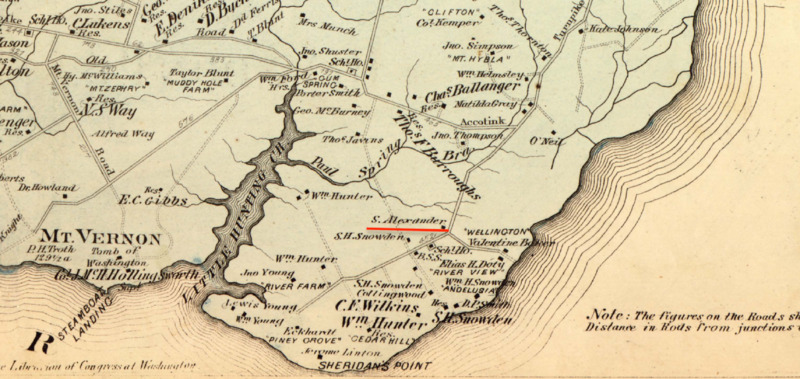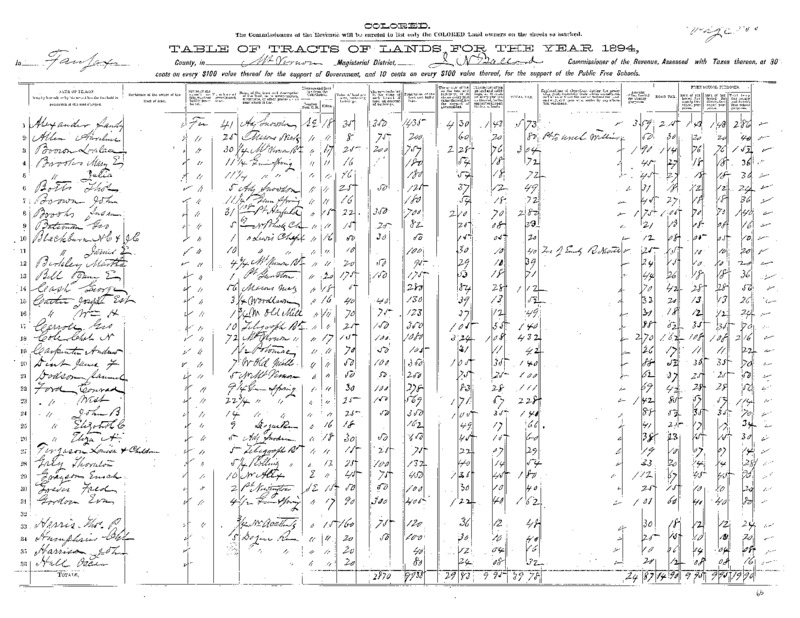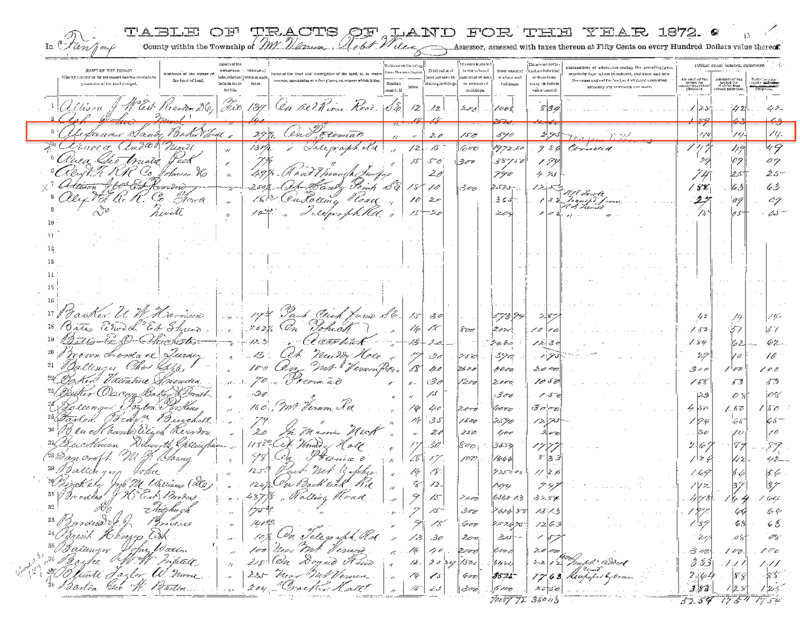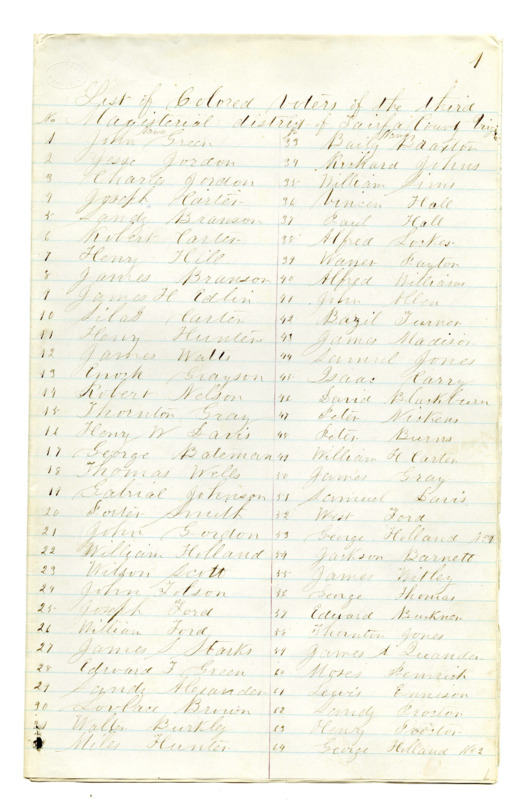Sandy Alexander
Sandy Alexander was an African American landholder who lived in Fairfax County Virginia in the late nineteenth and early twentieth century. This exhibit will piece together the limited evidence from Alexander’s life to construct a brief biographical entry as part of the Black Lives Next Door initiative at George Mason University, sponsored by the Center for Mason Legacies.
Tracing Black land ownership is challenging but there are some useful strategies offered by archivists at the Fairfax County Circuit Court’s Historic Records Center and librarians from the Virginia Room of the Fairfax County Public Library. First, we utilized the bigotry of the era to identify Black land owners. Using the land tax records that separated land ownership by race, we are able to find African American land owners more easily. Beginning in 1891, localities recorded the land owners and taxes paid on preprinted pages marked “white” and “colored.” The distinction remained through the mid-twentieth century.[1] Using these records as a starting point, it is easier to determine the race of the landowner, and it allows the researcher to explore the land tax records annually and give hints for where to find deed records.
The class started with a scanned version of the 1894 Mount Vernon District “Table of Tracts of Land for the Year 1894.” The records show the name of the person who paid the tax on the land, the number of acres owned, roughly where the property was located, as well as how much it was worth and the tax paid.[2] Using these records allows the researcher to move back and forth in time to see the earliest and latest point of time that the landowner paid taxes on their property.
Alexander first appears in the full listing (non-segregated) 1872 land tax records as paying taxes on twenty-nine and a half acres of land. The deeds show that Alexander purchased this land from Valentine Baker and his spouse and David Frost and his spouse on 20 February 1871 for $1180. Baker was a member of a Quaker group who bought the Wellington property from Stacy Snowden in 1866.[3] There are hints that Alexander lived in the area before this purchase. In 1867 Sandy Alexander appeared on “A List of Colored Voters Voting in the Third Magisterial District of Fairfax County.” This election required all eligible voters to vote. The tension that occurred when formerly enslaved and free Black men participated in elections created significant anger for many long-time white Fairfax residents which led to violence against newly arrived northern transplants as well as the African American community. Below on the right the list of the Mount Vernon District records his name as number five of two hundred twenty seven Black voters who cast their votes in the region.[4]
This research model also allows an opportunity to explore the census and other primary sources to better understand the people who lived and worked in this area. Piecing together this work attempts to move beyond anecdotes and statistics to better understand African American life in Fairfax in the post emancipation era. This project will also situate the tense social and political life for African American landowners and voters. Alexander voted in Sandy Alexander is one of twenty-four projects on this site designed to document the social, political, and entrepreneurial aspects of Black Lives Next Door in Fairfax. The next few pages will document elements of Alexander's family and landholding experience during his life.
[1] Library of Virginia, “Research Notes Number 1,” revised September 2001. https://www.lva.virginia.gov/public/guides/rn1_landtax.pdf
[2] Fairfax County Land Tax Records, 1897, “Table of Tracts of Lands for the Year 1894, Fairfax County, Mount Vernon District, Colored,” Fairfax County Circuit Court, Historic Records Center, 55-57.
[3] Nan Netherton, Fairfax County, Virginia: A History (Fairfax: Fairfax County Board of Supervisors, 1978), 421.
[4] “A List of Colored Voters Voting of the Third Magisterial District of Fairfax County, Va.”Military Rule Election Records of the Virginia Secretary of the Commonwealth, 1867, 1869, Box 11, Folder 15, and Virginia Untold: The African American Narrative. http://rosetta.virginiamemory.com:1801/delivery/DeliveryManagerServlet?dps_pid=IE1438287
By George D. Oberle III



